A common native plant mostly known for medicinal properties and attracting pollinators, evening primrose is easy to identify and I see it regularly where I live. Named for its flowers that open in the evening and close the following morning, it has many edible parts, some better than others, with the roots and seeds standing out above the rest. Today we'll go over what you need to know.
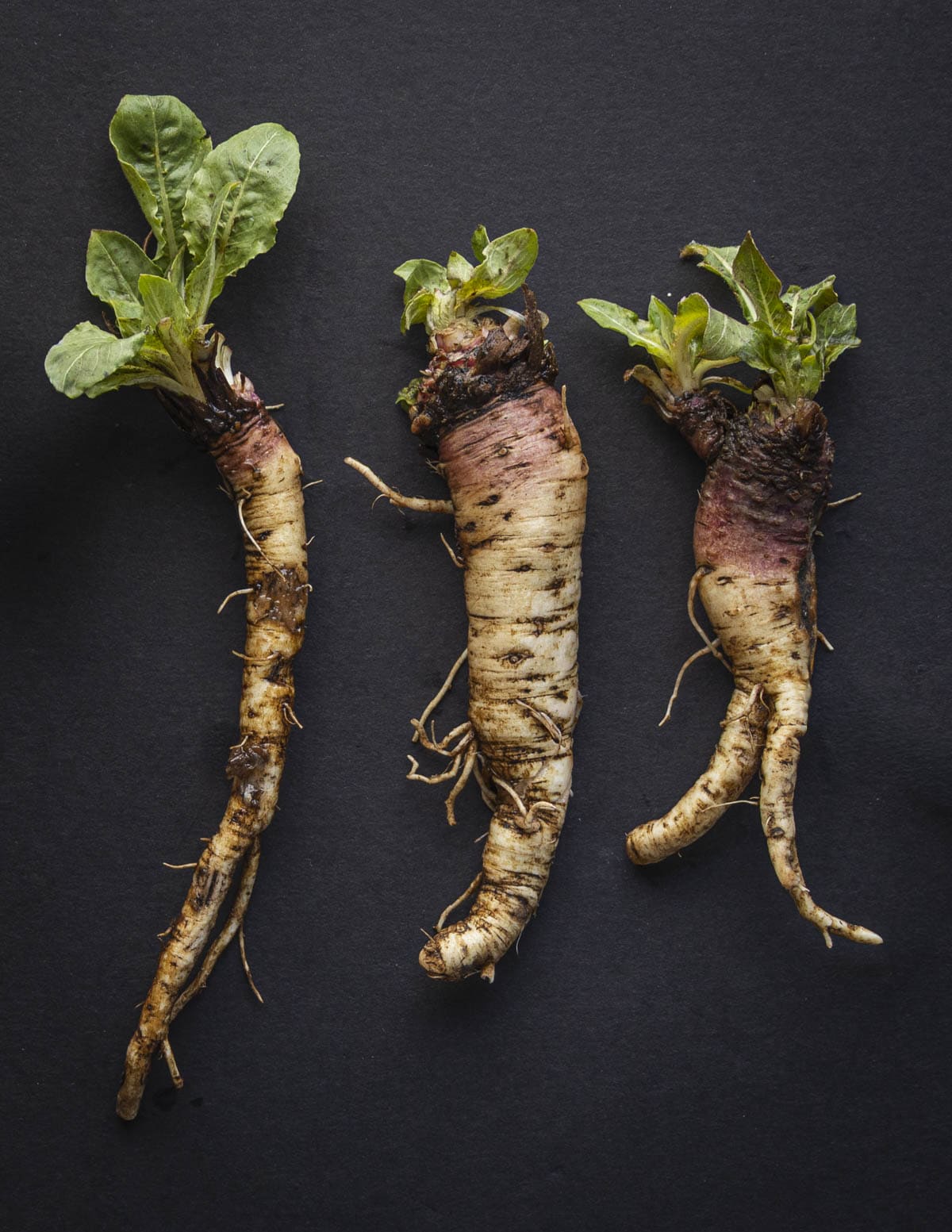
Background
Sam Thayer gives great descriptions of this in two of his books so it was on my radar, but I don't have many patches I can harvest from. It wasn't until a hiking trip in Arizona with my father in 2022 that I found enough roots young enough to cook a few meals. Three years later I finally have other images of the plant to round it out and describe them to you.
One thing that confused me with these plants at first was their relation to the primrose family. Confusingly, common evening primrose (Oenathera biennis) is in the evening primrose family (Onagraceae) where garden primroses are in the genus Primula. On a slight tangent, many Primula are also edible and I have peers who use the flowers in cooking and infusing drinks, specifically in Europe.

Common evening primrose is only one of many related edible primroses in North America. This fall I ordered seeds for Oenanthea rhombipetala, a cousin that only reaches two feet tall, from Prairie Moon Nursery, but there's a bunch of others too, with over 650 species in the genus at large.
Identification
Evening primrose is a biennial plant, forming a distinctly shaped basal rosette in the first year that often appears flat or like it's hugging the ground. The slightly overlapping leaves give it a sort of rough star shape to me. Once you notice them you'll be able to pick them out anywhere. Here's three different ages of leaves you might see on a first year plant from Spring to Fall.
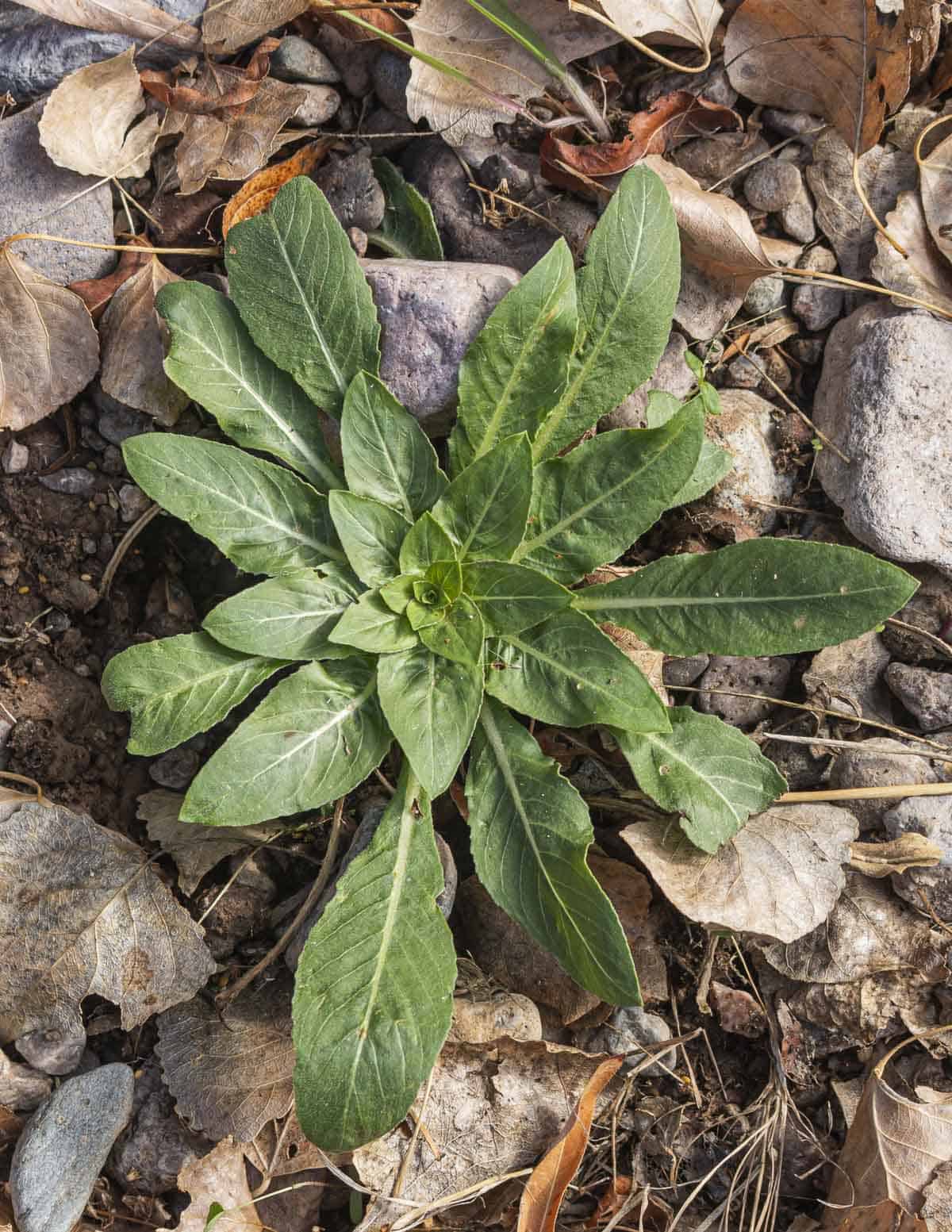
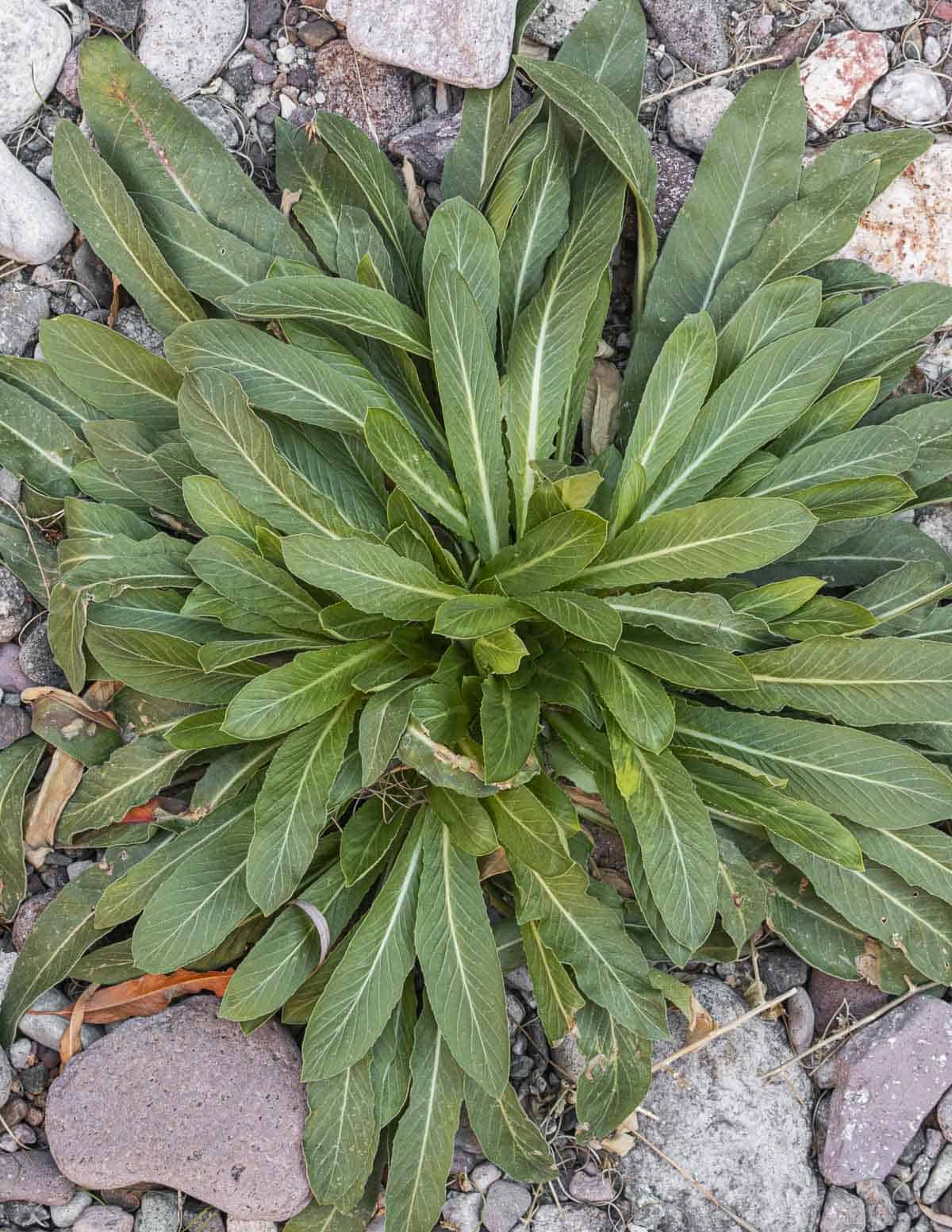

As the plant grows it will leaf out and lose the star-shape, eventually forming a flower stalk from the center if it's in its second year of growth. The flower stalk can be tall, reaching up to 7 or 8 feet in some places, but the plants I see are usually six feet or under. The small, yellow flowers appear along the stalk, opening in the evening and closing the following morning.
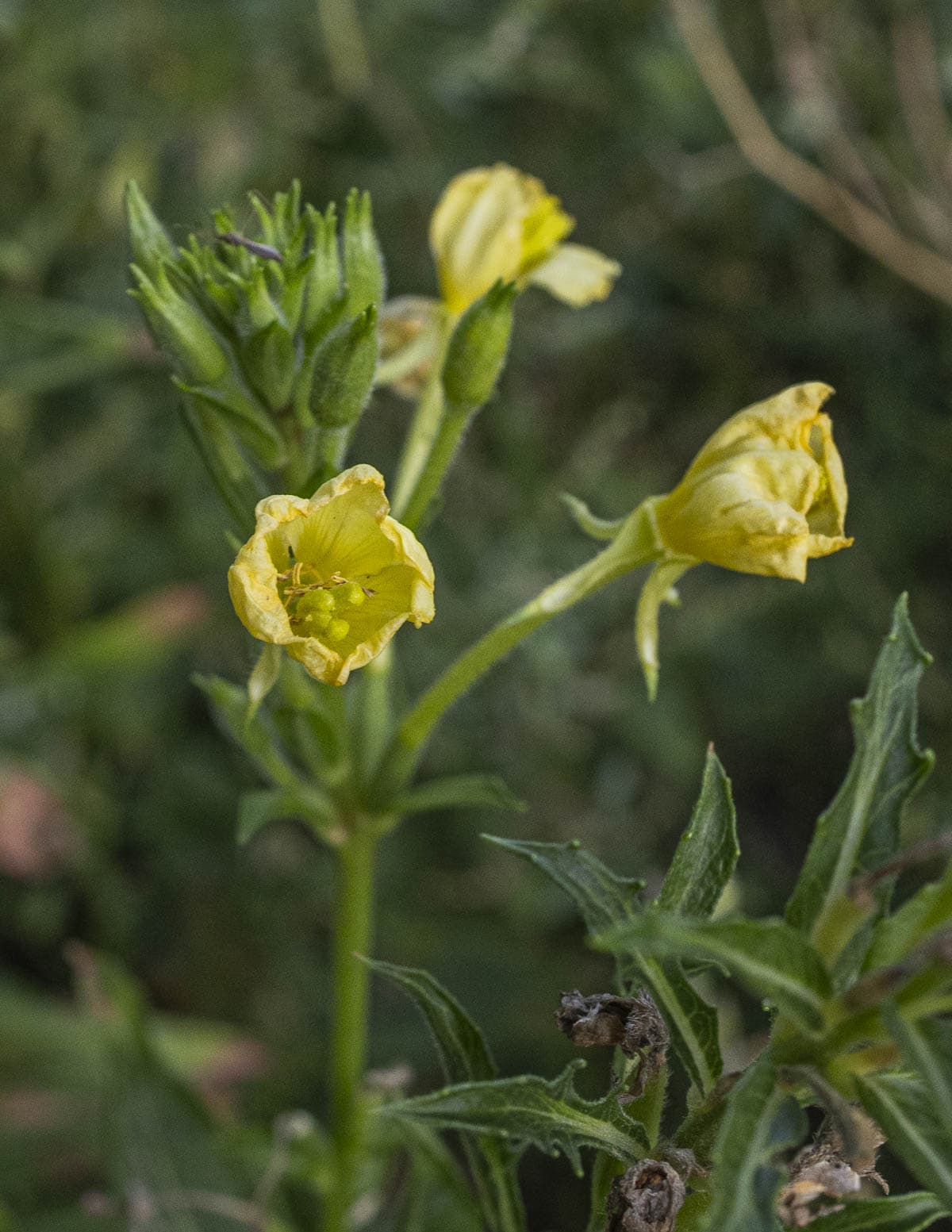
Many green, alternating seed pods are borne on the stalk. These are what you'll want to harvest in the fall if you want to try the seeds, which are plentiful and easy to harvest. In fact, the plants are actually cultivated for their seeds, which are pressed for evening primrose oil, which is marketed as a women's health supplement.
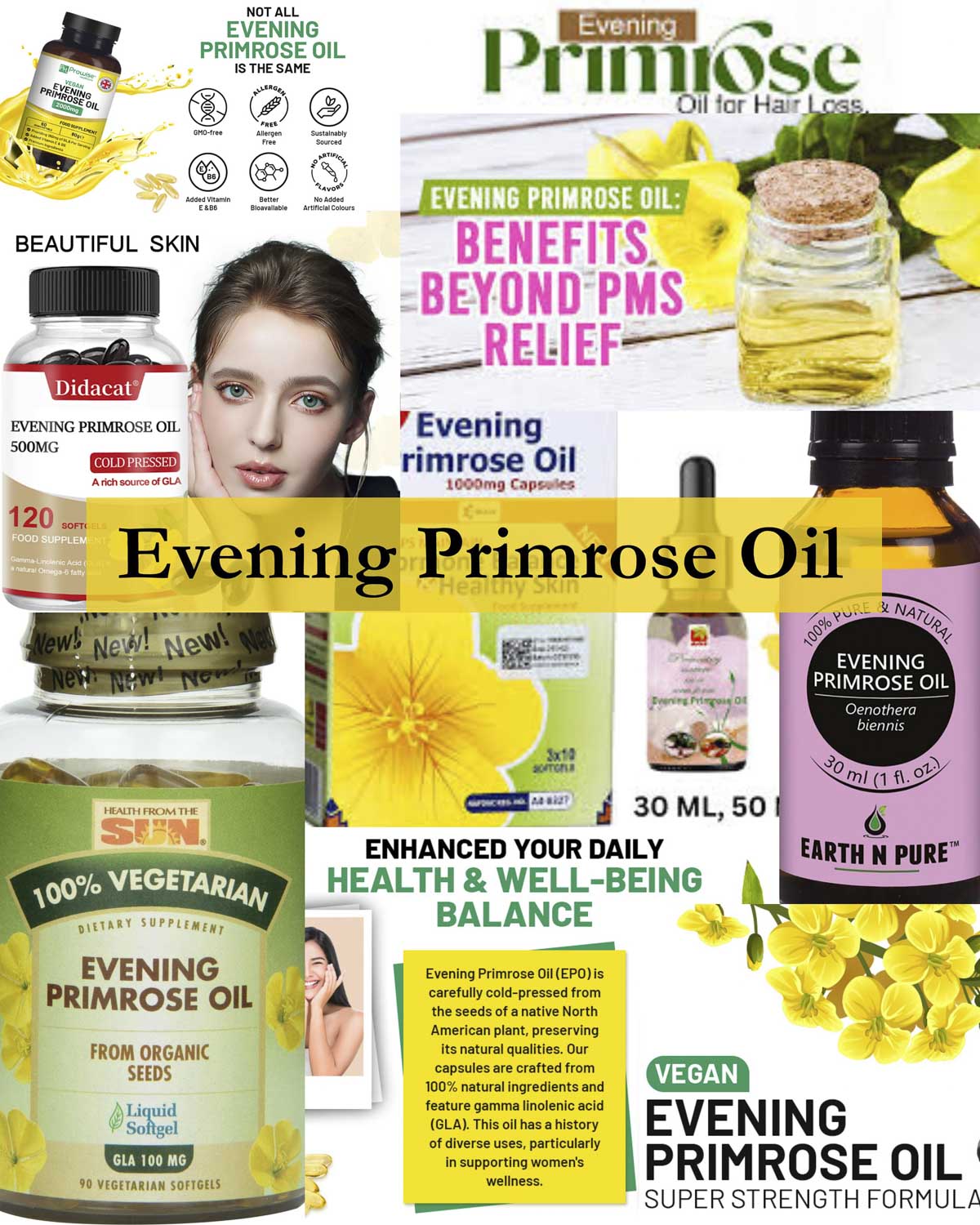
The oil's said to help with things like skin health and P.M.S. I can't confirm or deny any sort of efficacy here, but I can tell you the seeds were a fun addition to granola this fall.
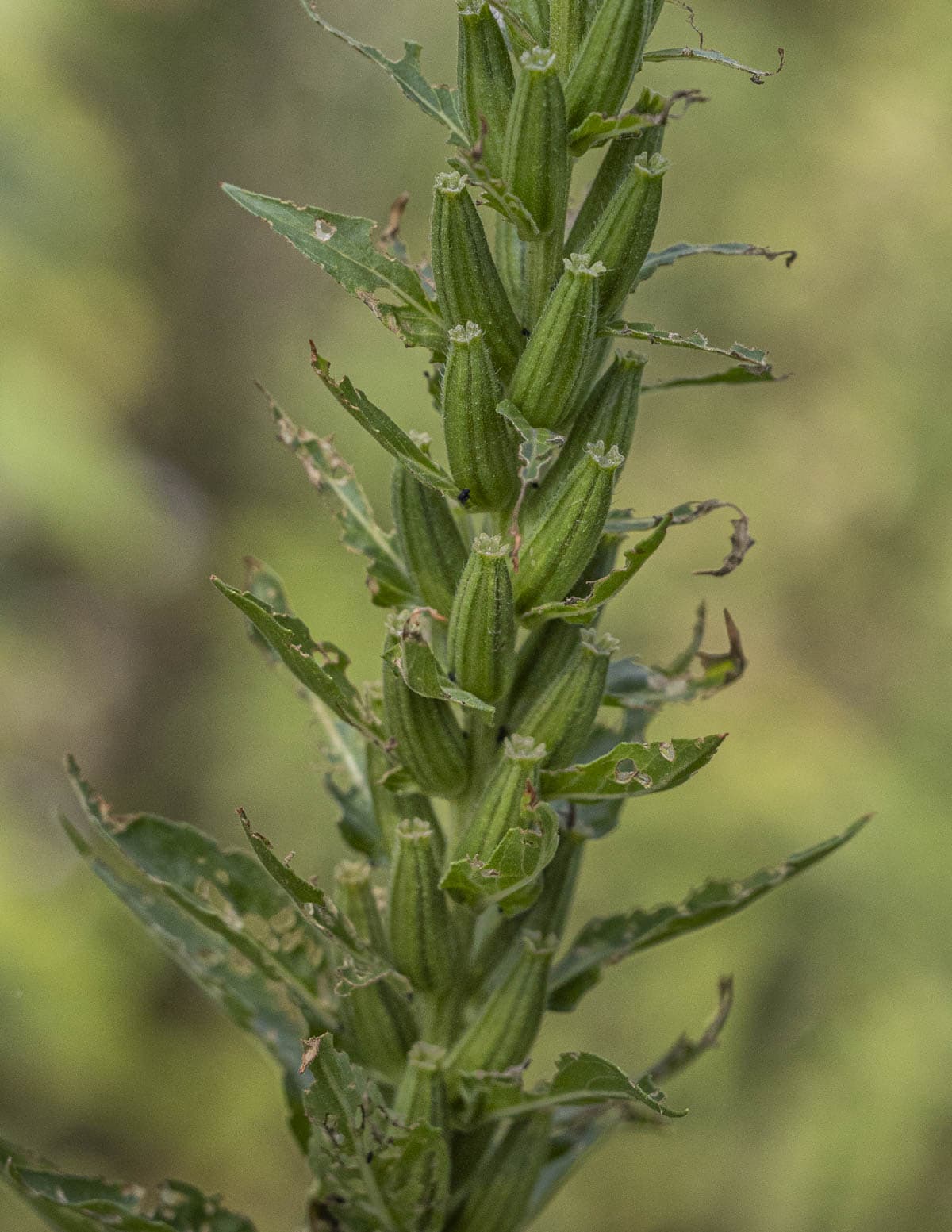
As far as look alikes go, I don't know of any that resemble this plant that would be dangerous, but there's numerous varieties of primrose across North America. None of them are poisonous but some will be better to eat than others.
Edible Parts
Evening Primrose has a number of edible parts. But, possibly the most important part of this post for some will be to know that every part of the plant causes a sort of dry irritation in the throat.
The irritation is most pronounced when eaten raw, but it could be noticeable, say, if you ate a bowl of only the cooked roots or greens. Besides the parts mentioned below, the young, tender shoots of second year plants can also be peeled and eaten.
Young Leaves
These may be my least favorite leaves besides plantain. I tried them a few times and found them tough and stemmy, even when young. The bigger issue was the astringent taste. Even after being boiled within an inch of their life, it was too much for me.

A few, well cooked, very young leaves could work in a blend, and I'd suggest adding garlic and hot pepper as I do with chicoria en padella. Older leaves are mostly tough stem, as you can see below.

The leaves are technically edible, but I'm never hurting for leafy greens. Roots, on the other hand, are a different story and harder to come across.
Flowers
The flowers are pretty, but are nearly as delicate as jewelweed flowers and have a short shelf life. Unlike the rest of the plants edible parts, these you can toss a handful of into a salad without worrying about a strong flavor or itchy irritation.

Flower Buds
The tender, unripe flower buds have a mild green flavor but make my feel a bit itchy if I eat more than a couple. I remember Sam Thayer speaking highly of these and I've been meaning to remember to get enough to cook with.

The first thing I planned to do was see how they ferment into capers. The buds are small and you'll need numerous tops to get enough to cook with, but fermenting allows you to gather at your leisure until you've filled up a jar, and will likely help with the irritation. I use the same method for nasturtium seed capers.
Seeds
The ripe seeds are available at the end of the season, and surprised me with the ease and volume they can be harvested. Just breaking a few seed heads off in late October I could hear many seeds falling just from handling the plant. Even off small seed clusters I'm able to get 2-3 teaspoons of seeds, which is remarkable.

The dried seeds have a non-descript flavor and a slightly tender texture that's not unpleasant. As there's no chaff or husk, they don't need to be winnowed and are edible straight off the plant.
I could easily see them added to cereals, breads, crackers, granola, and just about anywhere you'd add a mix of seeds. They can also be toasted and ground into a meal for adding to recipes.
Roots
By far the best edible part of the plant is the roots, but to get ones that will cook up tender you'll want them from young plants without a flower stalk or a shoot rising from the rosette. As with other wild roots like burdock they're very dense and take a while to cook so it's a good idea to cut them into small, bite-sized pieces. Raw, they have the same slightly irritating feel on my throat as the leaves, but not quite as pronounced.

The good news, is that after a slow simmer in a pot of soup, the irritating aspect disappears, leaving behind a mild, slightly radish-tasting root vegetable. Texture wise I'd compare them like a cross between burdock and parsnips-not overly tender, but not firm enough to be offensive.
If I had more plants near me in places I could dig, I might grab a few occasionally. If they tasted nearly as good as salsify or tender thistle roots, I definitely would.
General Cooking
I'm going to cover the basic cooking of the roots as it's the best part of the plant to eat and using the seeds is self-explanatory. Just like other root vegetables like carrots, you can potentially skip peeling the roots and just scrub them with an abrasive dish pad. Some roots, like the raggedy ones shown here, may have fissures that catch dirt and should be peeled.
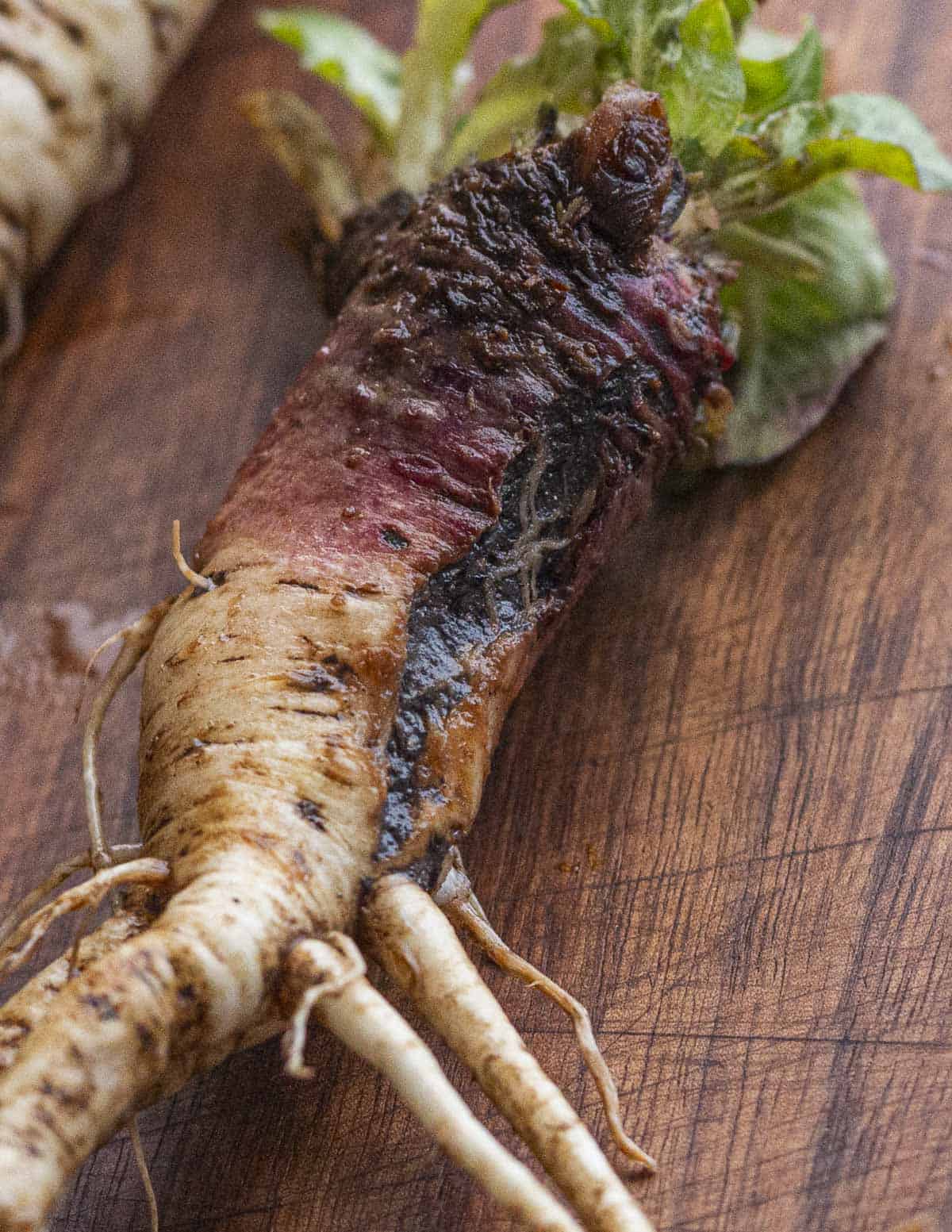
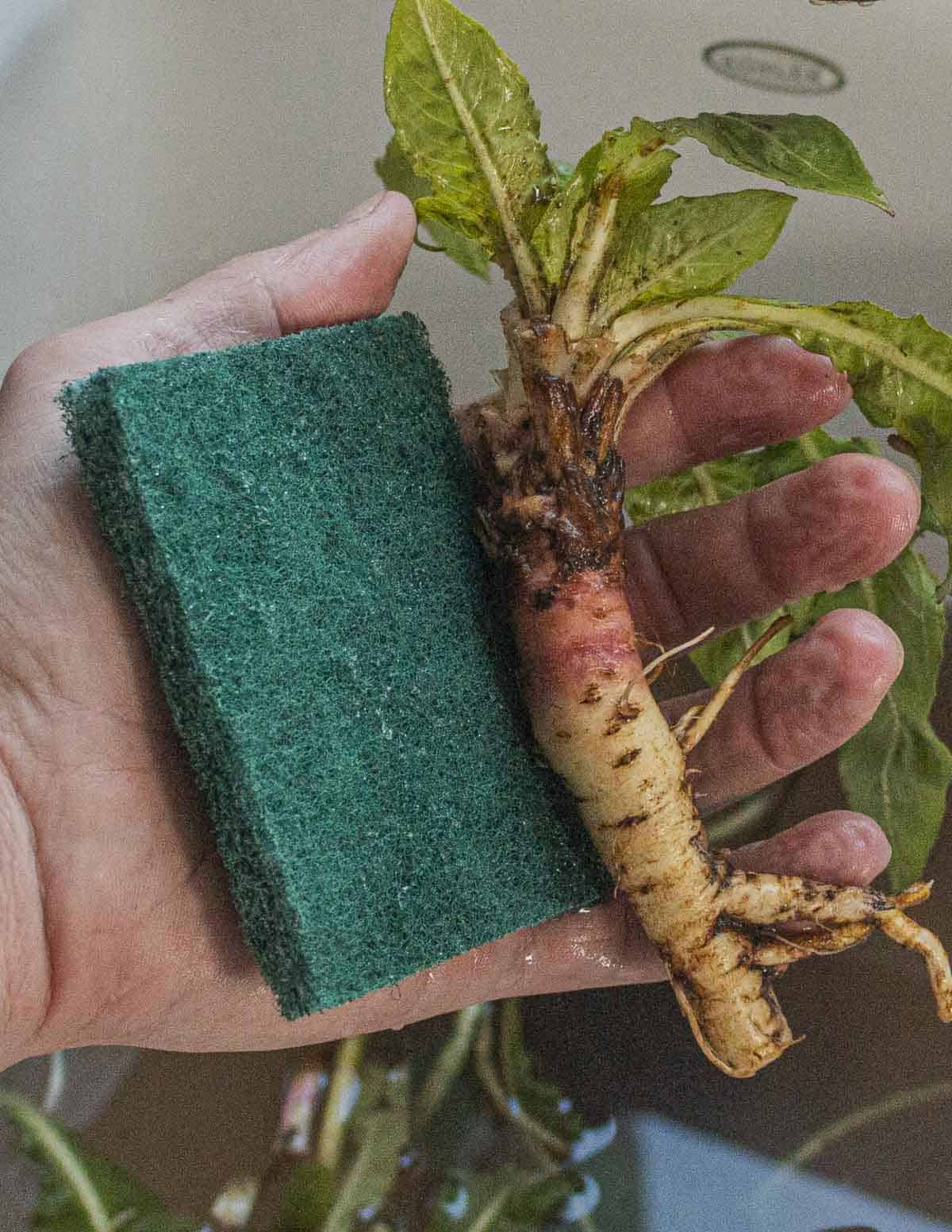

Once the roots are cleaned they're best cooked in soup to make them tender. They will take longer to cook than other root vegetables, so it's a good idea to cut them into small bite sized pieces.

After cooking my first batch in a simple broth I was disappointed to see the roots turn a sort of dingy grey color like a purple shirt that'd been washed too many times. The flavor was fine and the astringent / throat tingling taste was gone, but color was sad.
Not about to throw away the roots I'd packed in my suitcase I made another batch of soup, this time with beets. The roots took on the bright pigment easily and the color wasn't an issue after that.
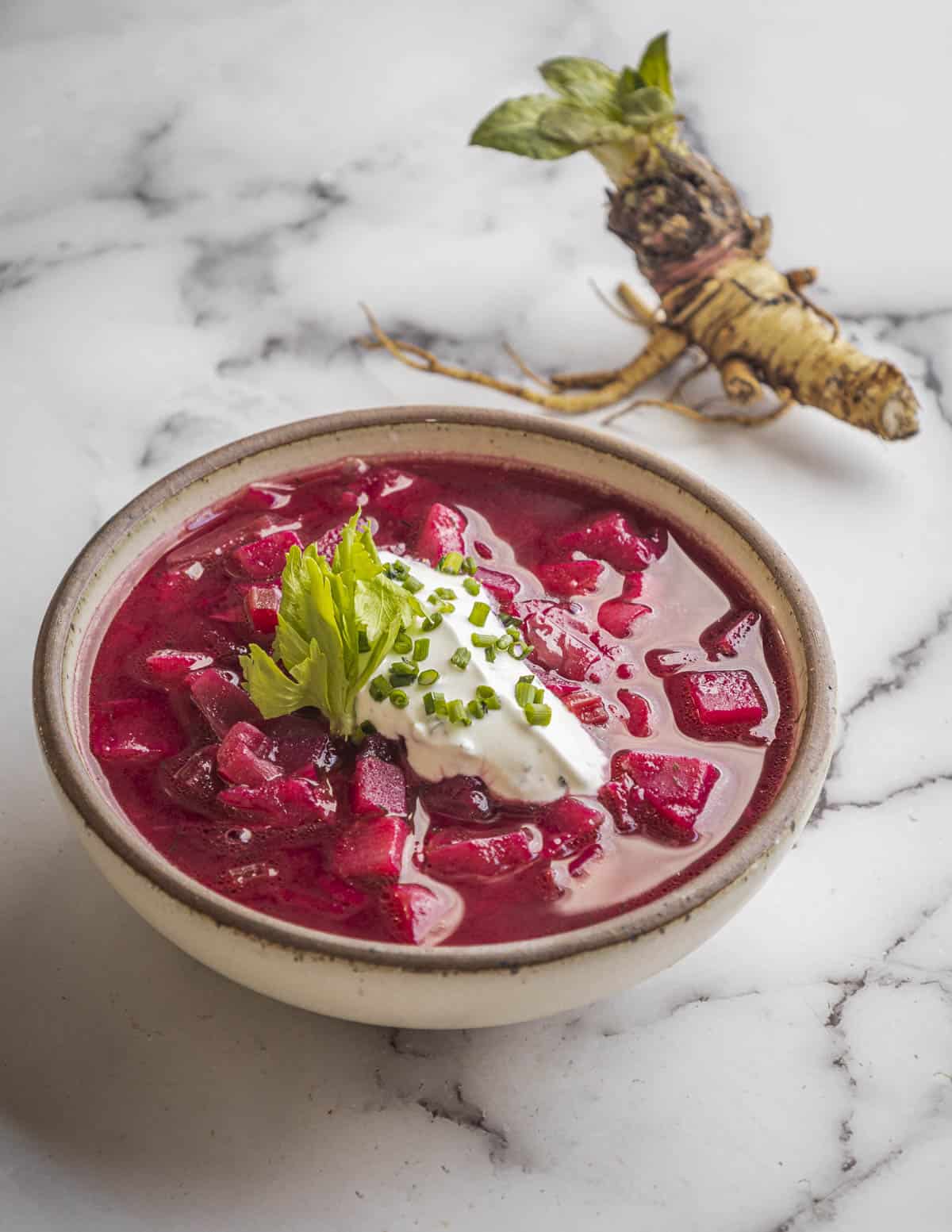
There's plenty of other ways to get around the drag color, another I'd mention would be grating lightly boiled roots and using them in my dandelion kimchi recipe.
Do you cook with these roots or use this plant? Feel free to leave a comment and share if you have anything to add.

Ellen
I've never eaten the roots raw, but I love them cooked. I boil until they're soft, then mash and combine with early spring greens and some chopped alliums to make my favorite fritters. I'd post a link to the recipe but it feels wrong to do that on someone else's website!
Alan Bergo
Thanks Ellen, totally fine to post a link here.
Thea
Every post opens my awareness of all that might be edible, and how to carefully choose and prepare. Thank you, Alan.
Alan Bergo
Thanks Thea. Nice to hear from you!